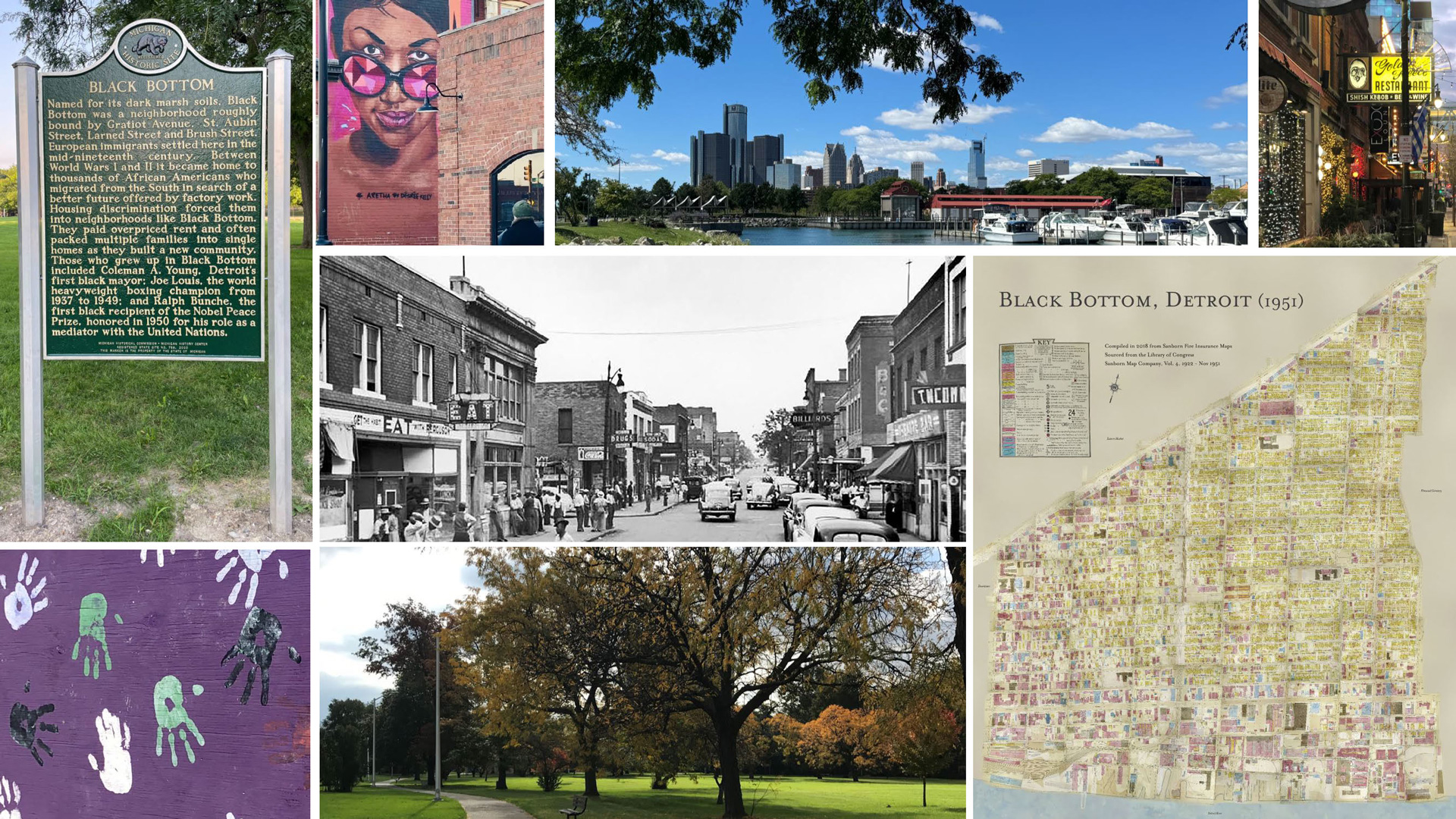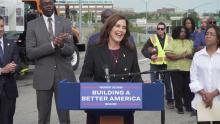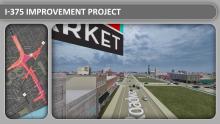The Michigan Department of Transportation (MDOT) will host an I-375 Reconnecting Communities Project Public Meeting on Tuesday, June 25, 20
I-375 Project - Zoning and Land-Use Study
block-detroitminew-views-block-news-events-block-1,News & Events*block-detroitminew-views-block-related-links-block-1,Related Links*block-detroitminew-views-block-video-playlist-block-1,Videos*documents-block,Documents*block-detroitminew-views-block-forms-block-1,Forms*block-views-block-faq-block-1,FAQs*block-detroitminew-views-block-district-map-block-1,District Map*block-views-block-council-office-directory-block-1,Office Directory*block-detroitminew-views-block-contacts-block-3,Contacts*block-detroitminew-views-block-contacts-block-4,Contacts*block-detroitminew-views-block-council-member-bio-block-1,Bio*block-detroitminew-views-block-sub-sections-block-1,Sections*block-detroitminew-views-block-web-apps-block-1,Web Apps*block-detroitminew-views-block-news-events-block-4,News*block-detroitminew-views-block-news-events-block-3-2,Events*block-detroitminew-views-block-contacts-special-block-1,Staff*block-detroitminew-views-block-statements-block-1,Statements*block-detroitminew-views-block-newsletters-block-1,Newsletters*block-detroitminew-views-block-newsletters-block-3,Ordinance*block-detroitminew-views-block-newsletters-block-2,Resolutions*block-detroitminew-views-block-newsletters-block-4,Memos
Zoning and Land Use Emerging Ideas: Draft Plan
Zoning and Land-Use Draft Survey – Deadline August 29th
Our vision - new boulevard corridor that creates equitable opportunities, enhances mobility, celebrates our centers of culture, and honors our history.
The I-375 Project by the Michigan Department of Transportation is a transformational project to convert the downtown interstate spur into a surface boulevard. The conversion will address inherent safety concerns in the design and maintenance of the highway and the bridges and accessibility into surrounding communities and the riverfront.
This project requires a greater understanding of the impacts to the surrounding communities: historic harm of past urban renewal efforts that removed a great center of black culture, commerce, and people; impacts of construction on surrounding communities and businesses and how to mitigate them; and the need to maintain safe connections and access for Detroiters and our visitors.
I-375 cut off the adjacent neighborhood from downtown and led to the demolition of Hastings Street, the last part of the Black Bottom neighborhood. Removing the expressway and replacing it with a boulevard will reconnect city streets in the area. While it won't bring back Hastings Street, it offers opportunities to honor the area's history, promote equitable development, enhance cultural spaces, and improve mobility.
Zoning and Land-Use Study
The City of Detroit develop a Zoning and Land-Use recommendations from a study that is in support and part of the overall neighborhood framework from MDOT I-375 Project. The framework will have elements including urban design, open space, mobility, history arts and culture, in addition to zoning and land-use.
Since this is a major infrastructure project will have a substantial impact on nearby neighborhoods, a framework is needed.
The Zoning and land-use study will work to address the following:
- What are the land uses that can be considered; based on community input?
- Based on the uses, what would be the most appropriate zoning?
- How do we consider connections to surrounding communities in determining recommendations?
- How does the boulevard design impact what can be considered in the recommendations?
- What could a market study indicate about the future pace of development?
- Are there interim uses that need to be considered?
The newly develop-able land will be owned by the State of Michigan and subject to Federal Department of Transportation regulations. Creating a plan with clear recommendations for the area is critical to help guide the future disposition of land and to direct financial resources for potential projects and enhancements.
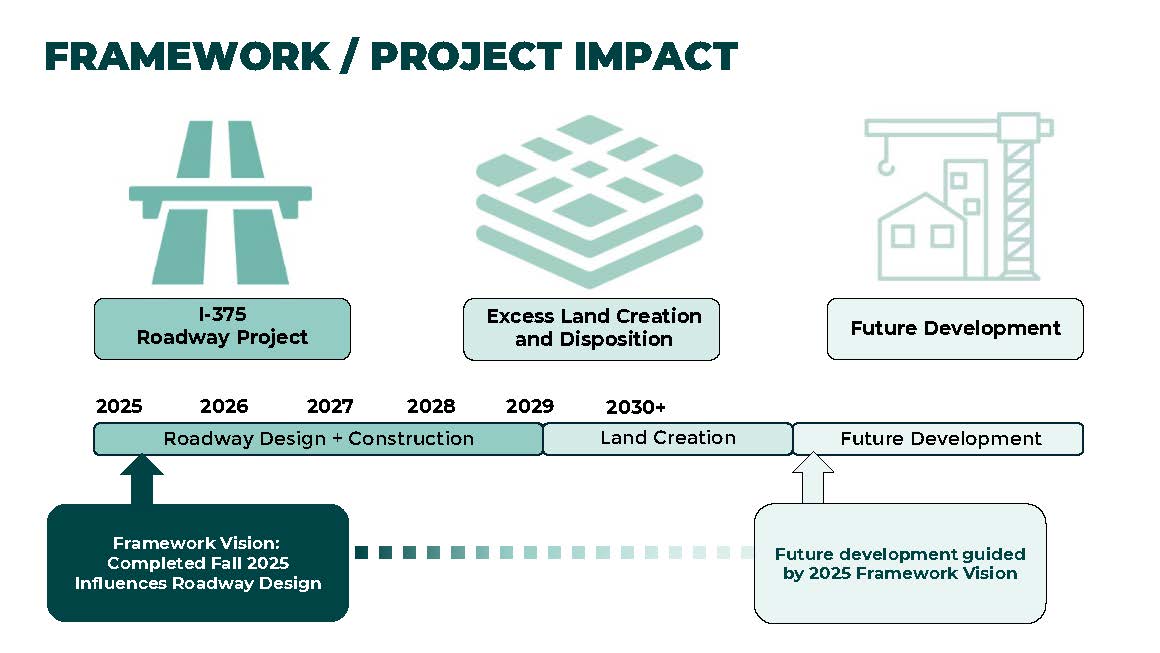
Framework Scope
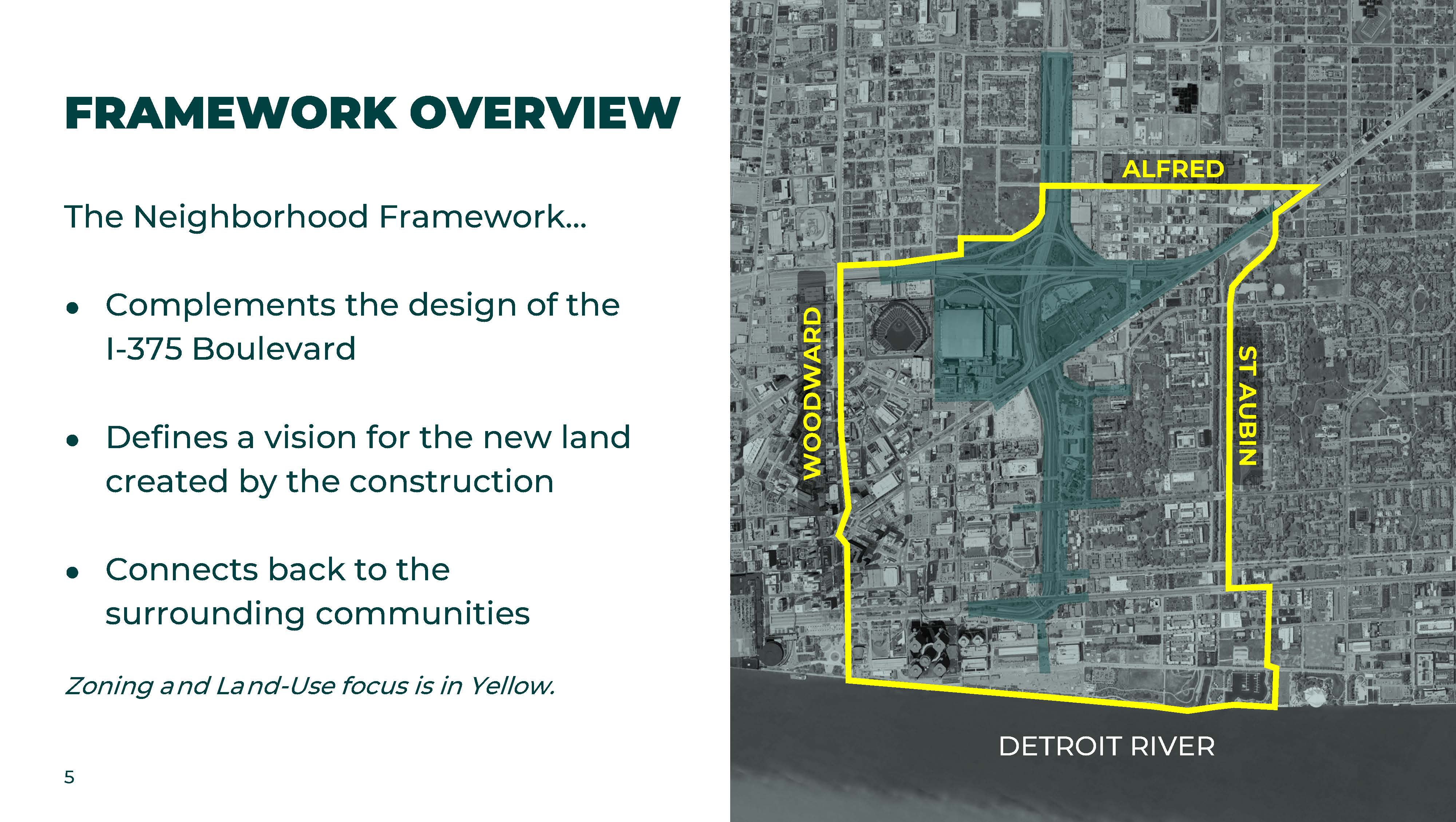
Framework Timeline
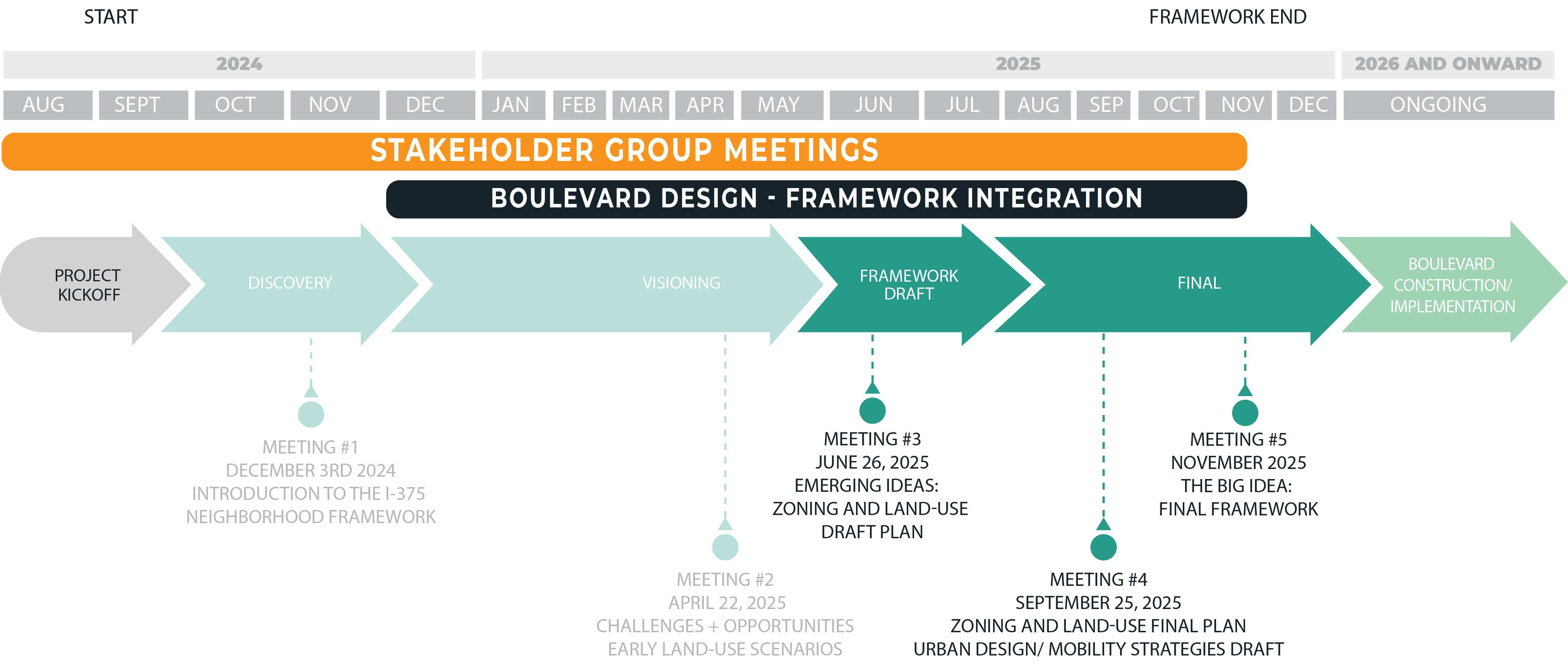
Past Meetings
'April 22,2025 Community Meeting - Challenges and Opportunities : Early Land-Use Scenarios
The City of Detroit hosted a community meeting to get feedback with a simple proposition – What can the creation of 30 acres of new land in the heart of our city do to improve the community? Attendees had a short thought exercise on scenarios developed from the perspective of the resident and from the visitor to Detroit to gather feedback on what given land uses could be used to improve the resident (residential) scenario and the visitor (Entertainment) scenario. Participants were then asked to create their own scenario through a longer, table exercise that did not have any preconditions using the given land-uses, other than existing landmarks. If participants wanted to add uses for consideration, they were given the opportunity to do so. We received a wide range of feedback, all of it important and all of it to be considered as we move forward in developing a zoning and land-use policy that is informed by Detroit residents.
Additionally, we introduced our new director of planning, Alexa Bush, who presented an overview of the framework and when the excess property comes online for future development; how the framework process can inform the future vision; an update on existing conditions; and a recap on Community Meeting #1.
December 3, 2024 Community Meeting – I-375 Neighborhood Framework Introduction
The City of Detroit hosted a community meeting to introduce the I-375 Neighborhood Framework process and elements of study at The Eastern on December 3, 2024 at 5:30. There was a wonderful turnout where we got to listen to residents on their thoughts on the framework process and elements (such as zoning and land-use, urban design, and the role history art and culture should have in this project). Currently we are documenting the information from that meeting to make available for the public as well as the livestream from MDOT. Click here to view the PowerPoint presentation given during the community meeting.
October 17, 2024 – I-375 LAC Meeting – I-375 Neighborhood Framework Kickoff and PDB Overview
- I-375 Local Advisory Committee Meeting
- Committee members received a presentation and update on the consultant kick-off of the I-375 Neighborhood Framework and the elements that will comprise the framework: Zoning and Land-Use; Urban Design; and History, Art and Culture. Members also received an overview of the progressive design-build method of delivery for the new boulevard and how the framework can influence the design. Click above to view the LAC presentation.
